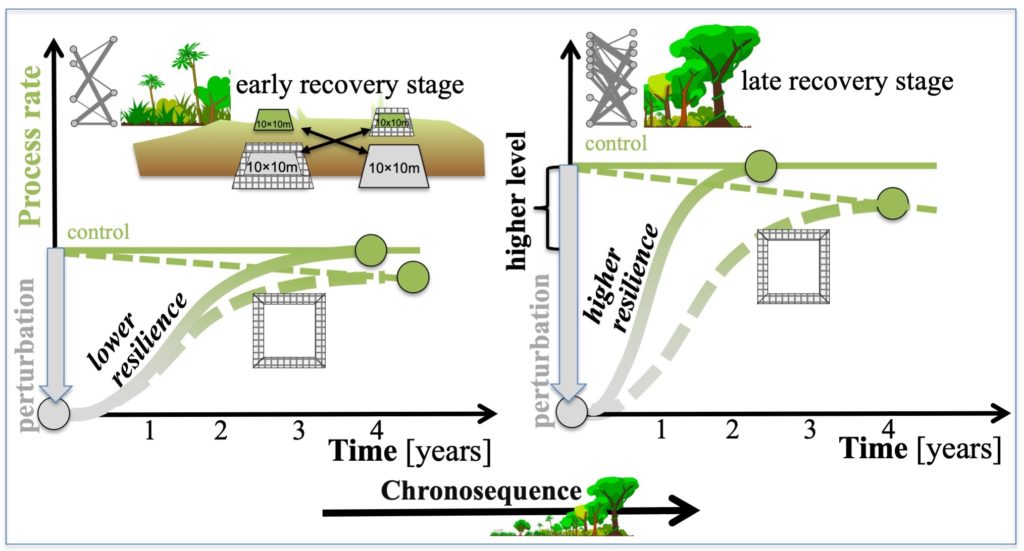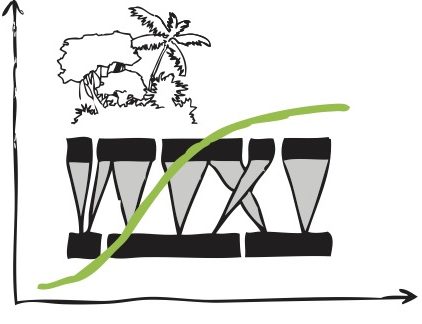Chronosequence: our 62 study plots include 6 pastures and 6 cacao plantations currently used, 34 plots that were formerly use as pasture or plantation and now recover as secondary forests for different time spans, and 16 old-growth forests. Such chronosequences are defined by a space-for-time substitution and represent a widely used approach to study successional dynamics in ecosystems such as forest recovery. Secondary forests recovering from pastures and plantations represent an time span of >36 years: the oldest plots started to recover in 1985, the youngest in 2021. The old-growth forests show no indication of previous use by humans.
Perturbation – recruitment experiment (P-REX): On 32 of the plots, we experimentally test the recovery dynamics of communities, interactions and processes from a pulse perturbation. The perturbation is represented by a complete removal of smaller understory vegetation and litter. An additional treatment is the exclusion of terrestrial anmials by a fence. The design includes four treatments per plot (each 10 × 10 m): perturbation with and without fence, unmanipulated control plot with and without fence.
Effects of perturbation and mammal exclusion are likely to vary along the chronosequence. We are thus particularly interested in the interaction between treatment effect versus forest recovery age. We predict that reassembled (more complete and complex) networks in later stages of forest recovery enhance both the level and the resilience of ecosystem processes. (See introduction video).


